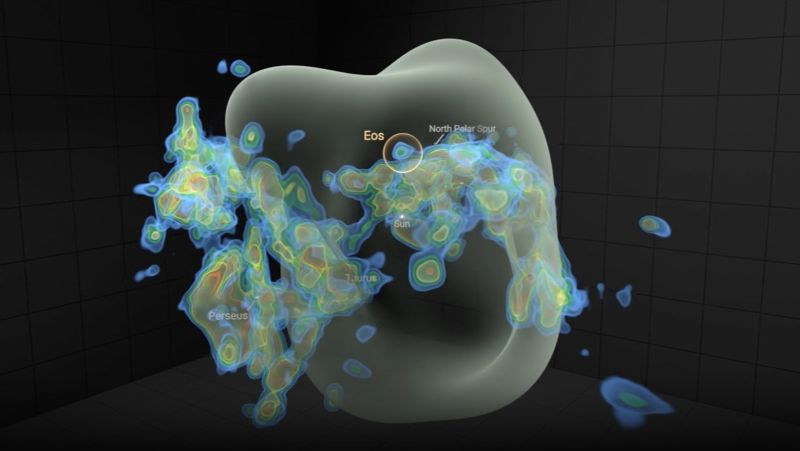In a fascinating development that could significantly enhance our understanding of celestial formation processes, astronomers have detected an invisible molecular cloud named Eos, situated unexpectedly close to Earth. This newly identified cloud has the capacity to illuminate our knowledge of how stars and planets are born, presenting scholars with a groundbreaking opportunity to explore the mysteries of the universe.
Eos, named after the Greek goddess of dawn, is an impressive entity, measuring approximately 40 lunar diameters across, and it possesses a mass approximately 3,400 times that of our sun. This revelation was articulated in a recent study published on Monday in the reputable journal, Nature Astronomy. The sheer magnitude of Eos would make it appear extraordinarily large in the night sky if it were visible to the naked eye.
Thomas Haworth, an astrophysicist involved in the study from Queen Mary University of London, noted that in the field of astronomy, discoveries often come through enhanced observational techniques using advanced telescopes. He emphasized the peculiar nature of Eos, pointing out that it was virtually in our cosmic backyard, yet had eluded detection until now.
The intrinsic nature of molecular clouds like Eos, which consist of gas and dust, is critical in the formation of stars and planetary systems. These clouds harbor dense clusters capable of collapsing to form young stars over time. Traditional methods for detecting such clouds typically rely on radio and infrared observations, specifically pinpointing the chemical signature of carbon monoxide.
Haworth explained that the conventional approach to identifying molecular clouds focuses heavily on carbon monoxide emissions, which is relatively straightforward for observational instruments to detect. However, Eos remained hidden not due to its size but rather because it contains very little carbon monoxide, preventing it from emitting the distinctive spectral signatures normally utilized in cloud detection. The breakthrough in discovering Eos came from observing the far-ultraviolet light produced by hydrogen within the cloud.
The innovative approach employed by Haworth’s team involved utilizing data from a far-ultraviolet spectrograph known as FIMS-SPEAR, which operated aboard the Korean satellite STSAT-1. The release of the relevant data earlier this year allowed the lead study author, Blakesley Burkhart, a physics and astronomy associate professor at Rutgers University, to analyze it and lead the discovery.
Burkhart noted the historical significance of this discovery, emphasizing that Eos represents the first molecular cloud identified through the detection of far-ultraviolet emissions from molecular hydrogen. The data indicated that this cloud is “literally glowing in the dark,” igniting excitement among scientists regarding its potential for future study.
The sheer proximity of Eos—only 300 light-years from Earth—provides researchers with an unprecedented opportunity to glean insights into solar system formation. Burkhart expressed enthusiasm over the discovery, highlighting the capacity to measure the processes through which molecular clouds evolve into stars and planets.
Moreover, this unexpected finding has led astronomers to reconsider their previous assessments of molecular clouds within 1,600 light-years of the sun. Melissa McClure, an assistant professor at the University of Leiden, commented on the discovery as being intriguing, given that it is the nearest known molecular cloud. She likened the revelation to uncovering a hidden underground bunker in an otherwise familiar neighborhood full of above-ground houses and open lots.
Eos’s discovery not only enhances the scientific community’s understanding of molecular clouds but also opens avenues for further research into the intricate processes of galaxy evolution and stellar formation. The implications of this breakthrough could significantly reshape the existing landscape of astrophysical studies, establishing a new standard for how we observe and interpret the cosmic phenomena surrounding us.



